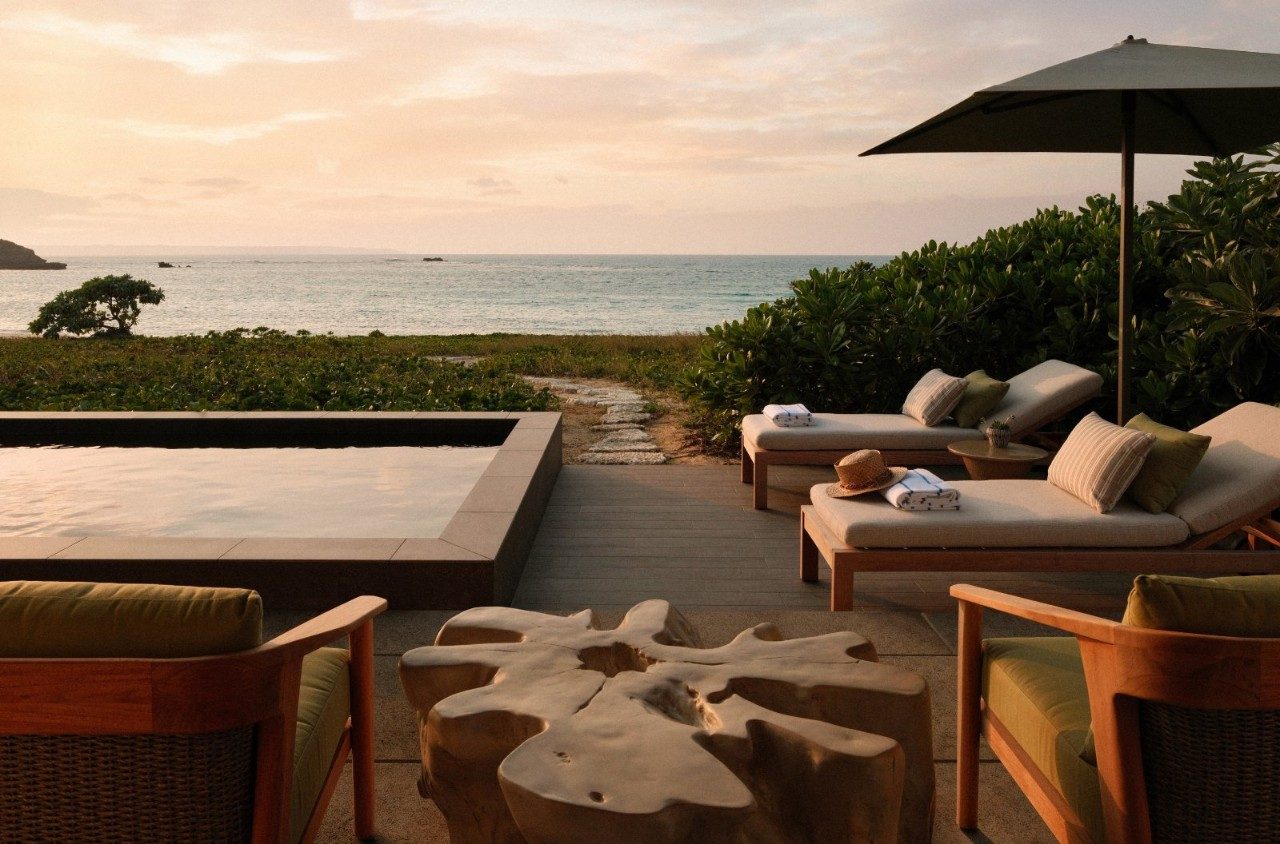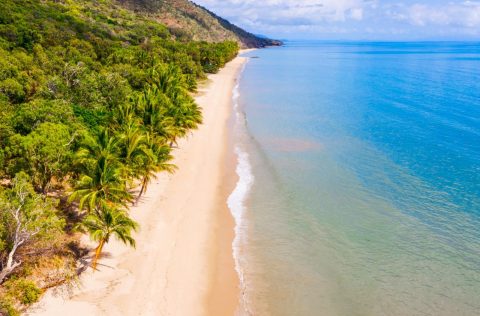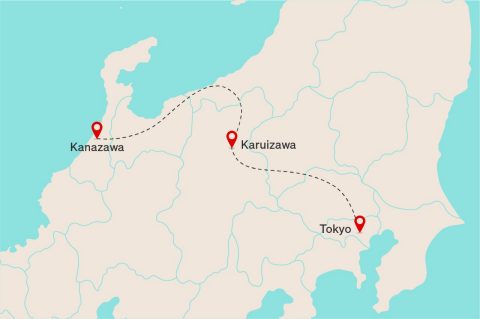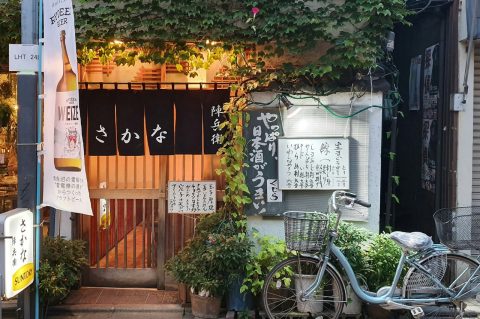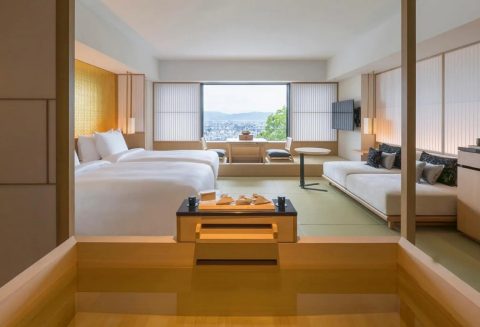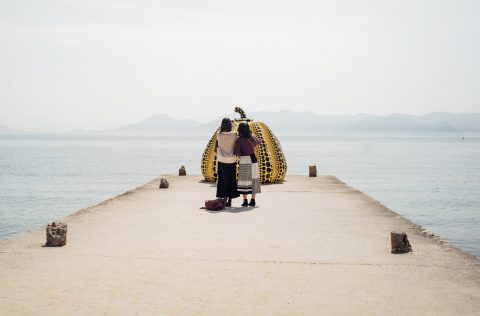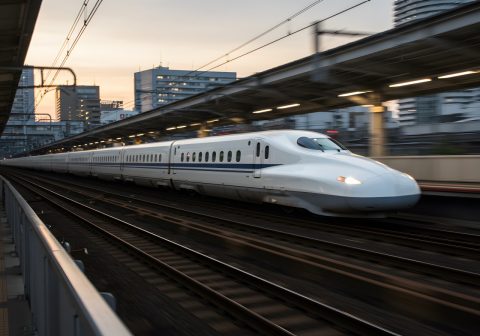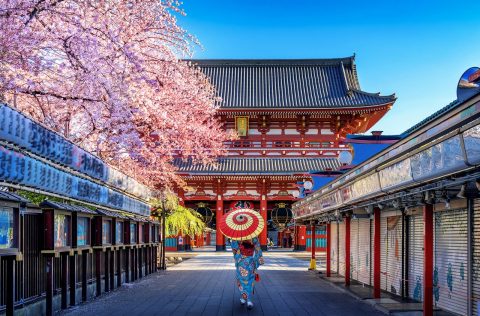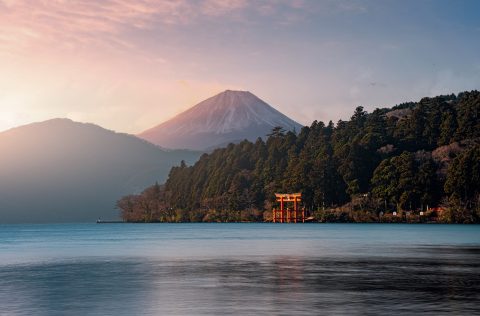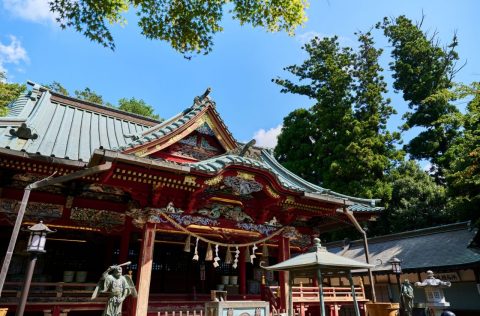Big Adventures, Small Budget: Exploring Japan for Less
Japan’s popularity as the destination du jour shows little signs of waning and it’s easy to see why. Whether you’re after an incredible omakase meal, a tranquil tea ceremony or a restorative soak in a private onsen, there are plenty of unforgettable experiences on offer. The good news? You don’t have to spend a fortune to have a great time. While major cities such as Tokyo and Kyoto are filled with affordable places to eat, stay and explore, there are even more spectacular gems to uncover once you get away from the classic tourist spots. Think quiet mountain paths, local markets and making new friends over a few drinks. Here’s our round up of the best experiences – that are also easy on the wallet – to ensure a memorable trip to Japan.
Image credit: abdelaziz@771 - stock.adobe.com
Make tracks
1/32Location: countrywide
The JR Pass (Japan Rail Pass) – which gives you access to Japan’s famed railway system – starts from about AU$517 for a seven-day adult ticket, up to $1450 for 21 days, and is ideal for those planning to crisscross the country. A better option? Focus on one area and pick up a regional pass such as the JR East Pass (Tohoku area) or Kansai-Hiroshima Area Pass, which offer unlimited rides within their zones for a set number of days. If you’re booking point-to-point tickets, try online options like smartEX (for the Tokaido line between Tokyo and Kyoto) or JR-East’s e-ticket system for small discounts and flexible reservations. On the Tokyo-Osaka route, the Platt-Kodama ticket offers big savings on the slower Kodama Shinkansen trains and even includes a reserved seat and a free drink.
Image credit: Ginza Toyoda
Enjoy an affordable Michelin lunch
2/32Location: Tokyo
Want to dine on the best of the best (without blowing the budget)? Go for lunch. Many top-tier restaurants in Japan offer scaled-down versions of their evening offering for a fraction of the price during the day. At Ginza Toyoda, a refined Michelin-starred kaiseki spot on Namiki-dori Street (just down the street from the designer boutiques of Gucci and Louis Vuitton), dinner runs over JP¥25,000 (about $258) a head. But at lunchtime, you can enjoy a seasonal menu with seven to eight courses for a far more palatable ¥10,000 (about $100).
Image credit: 隆一 本田 - stock.adobe.com
Make some deer friends
3/32Location: Nara
Nara is famous for its friendly, free-roaming deer, which have no fear of humans. They tend to congregate in Nara Park on the way to Todaiji Temple, providing unforgettable photo opportunities. On Sunday mornings in summer and weekend mornings in winter (and some dates in March), you can watch the shikayose, or deer calling, when a French horn player summons the deer with a performance of Beethoven’s Symphony No. 6 (Pastoral). As a reward, they get as many acorns as they can eat.
Image credit: Samuel Ponce - stock.adobe.com
See Tokyo from the top
4/32Location: Tokyo
You don’t need to fork out for a ticket to Shibuya Sky to get a postcard-perfect view of Tokyo. One of the best (and free) spots is the 45th floor of the Tokyo Metropolitan Government No.1 Building in Shinjuku. The twin towers’ observation decks are open to the public and, on a clear day, you might even catch a glimpse of Mount Fuji on the horizon. By night, the city lights stretch endlessly in every direction and the building’s nightly projection mapping illuminates its futuristic façade.
Image credit: Tanya - stock.adobe.com
Discover green spaces with deep roots
5/32Location: Hiroshima
Traditional Japanese gardens reflect a balance between natural beauty and the human desire to shape our surroundings. These green spaces showcase Japan’s ancient art of landscaping – a harmonious combination of scenery adorned with winding trails, water features and rustic tea houses. Many are free to enter or cost just a few hundred yen. In Hiroshima, Shukkeien Garden has come to symbolise resilience. Created more than 400 years ago for a local lord, it was restored by the community after the atomic bombing. It costs just ¥350 (about $3.60) to wander its meandering walkways.
Image credit: 健太 上田 - stock.adobe.com
Find your Zen
6/32Location: Yokohama
Even a short meditation session can help clear your head, lower stress and improve focus – benefits backed by science as well as centuries of tradition. Just outside central Yokohama, south of Tokyo, Sojiji is a spacious temple complex with quiet paths and big open halls. Once a month on a Saturday, it holds an English-language zazen (seated meditation) followed by a guided tour of the temple grounds. It’s an easy way to experience Zen meditation and temple life. The cost is ¥500 (about $5) and reservations are not necessary.
Image credit: Adobe Stock
Street eats and soul food
7/32Location: Fukuoka
Japan’s street-food favourites – yakitori (grilled chicken skewers), okonomiyaki (savoury pancakes) and takoyaki (crisp octopus-filled balls) – aren’t just delicious. They’re great value and you’ll find them everywhere from festivals and local dive bars to casual street stalls. In the lively southern city of Fukuoka, street food is practically an art form. At sunset, yatai (food carts) pop up along the Naka River, serving steaming bowls of Hakata ramen and grilled snacks to office workers and curious visitors alike. Just show up, grab a seat and point to whatever looks good.
Visit a traditional bathhouse
8/32Location: Nara
Don’t be shy – taking a bath with strangers is a great way to immerse yourself in local culture. Until the 1970s, most city homes in Japan didn’t have bathtubs so a trip to the neighbourhood sento (public bathhouse) was part of daily life and a chance to catch up with the community. In Nara Prefecture, Gose city’s sento has been returned to its former glory and features more contemporary additions, including a Finnish-style sauna. After a soak or sauna, it’s not uncommon to see locals unwinding with a cold beer. Guests at the Gose Sento Hotel can use the baths for free but non-guests are charged ¥440 (about $4.50) per visit. It’s a great way to relax after a hike on nearby Mount Katsuragi.
Image credit: Alamy Stock Photo
Take yourself out to the ballgame
9/32Location: around Japan
Sumo might be Japan’s traditional sport but baseball – introduced to the country in the late 1800s – is certainly a local favourite. Beer-drinking, sunset skies, passionate cheering, kooky mascots and even fireworks make catching a game the ideal outing for all types of travellers, not just sports fans. Outfield seats usually go for about ¥2500 ($25) or sometimes less, and many teams, including the Tokyo Yakult Swallows, offer easy online booking in English. You can gain entry with a QR code or pick up a paper ticket at a convenience store. Booking sites such as Klook also sell tickets that you can collect at the stadium.
Image credit: zasabe - stock.adobe.com
Dress the part
10/32Location: Tokyo
Just landed in Tokyo ahead of your hotel’s check-in schedule? Trying to squeeze in one last experience before heading to the airport? Ota, a 15-minute drive from Haneda Airport, is more interesting than you might expect. At Ota City Tourist Information Center, you can try free cultural activities without a reservation, including kimono dressing, origami and calligraphy. The nearby Kojiya Shopping Street is a 700-metre covered arcade that’s a slice of everyday Tokyo, lined with old-school fruit-and-veggie shops, takeaway counters, retro cafés and the odd trendy bakery.
Image credit: Rennosuke
Eat elite ramen in a hidden lab
11/32Location: Kyoto
The soupy delight of ramen is ubiquitous in Japan and, thankfully, it’s a wallet-friendly feed. But that doesn’t mean it can’t be a standout dining experience. Hidden away in Kyoto’s backstreets, Rennosuke – whose sleek minimalist interior makes it feel more like a culinary laboratory than a typical ramen shop – offers handcrafted ramen and other creative dishes for less than ¥2000 (about $20). The specialty here is refined soy sauce ramen with a clear seafood dashi broth and Kyoto-grown wheat noodles. Each bowl is presented on custom ceramics that channel fine dining rather than fast food and it’s no surprise the restaurant has earned the Michelin Guide’s Bib Gourmand. But here’s the real win: unlike most ramen joints in Japan, you can make a reservation so no queues to stand in while hungry.
Image credit: Alamy Stock Photo
Try super fresh seafood (that isn't just sushi)
12/32Location: Northern Japan
If you love seafood, try building your own kaisendon (seafood rice bowl) at a local fish market. In Miyagi, north of Tokyo, head to Shiogama Fish Park, where you can grab a set of rice and miso soup for ¥400 (about $4.15) then wander the stalls, picking your favourite toppings – think fresh maguro (tuna), creamy Matsushima oysters and other local catches, most for just ¥150-250 (about $1.55-$2.60) each. Further north at Furukawa Fish Market in Aomori, the experience is known as nokkedon. Buy a set of 12 meal tickets for ¥2200 (about $22, or ¥190 for an individual ticket) to trade for seafood toppings from market vendors, for a choose-your-own-adventure lunch.
Image credit: TravelWorld - stock.adobe.com
Spend a night in a temple
13/32Location: Wakayama
Japan’s temples are renowned for their symmetrical, harmonious design and for the sense of serenity they evoke. In the temple town of Koyasan in Wakayama Prefecture, visitors can have a unique stay by spending the evening in this peaceful setting. While it’s possible to visit on a daytrip, staying overnight delivers an unforgettable experience – you’ll see lantern-lit streets after dark and hear the gentle rhythm of morning chants echoing through temple halls. Book a shukubo (temple lodging), where you’ll sleep in traditional tatami rooms, enjoy Buddhist vegetarian meals and (if you’re up for it) rise at dawn to join the monks for early morning prayers. Expect to pay about ¥15,000 per person ($155), which includes dinner and breakfast.
Image credit: Jorge - stock.adobe.com
Catch some Kabuki
14/32Location: Tokyo
Back in the Edo period, kabuki actors were the pop stars of their day, famous for their bold make-up and dramatic performances depicting juicy storylines full of love, betrayal and revenge. The art form is still going strong 400 years on. A full show can run for several hours but for ¥3000 ($30) or less, you can catch a single-act performance (hitomakumi) at Tokyo’s Kabukiza Theatre in Ginza. But there’s a catch: same-day tickets are only sold in person so you’ll need to queue at the box office that morning.
Image credit: teamLabs
Dive into a fantasy world
15/32Location: Tokyo
From the spellbinding Ghibli Park in Aichi, where the namesake film studio’s beloved anime characters are brought to life, to Tokyo Disneyland’s magical journey into the worlds of Winnie the Pooh, Pirates of the Caribbean and Beauty and the Beast, Japan’s theme parks are legendary. Some transportive experiences however are more affordable than others. While a 1-Day Passport to Tokyo Disneyland for an adult starts at ¥7900/$81, Tokyo’s just-as-spectacular TeamLabs exhibit, an electrifying collection of digital art and vibrant installations, is ¥3600/$37 per adult, and entry for children under three is free.
Step back in time
16/32Location: Kanagawa
Just outside Tokyo, Nihon Minka-en is an open-air folk-house museum that gives you a glimpse into rural life before modernisation. Scattered across a leafy hillside, the thatched-roof houses (minka) were brought here from all over Japan, with some dating back to the 1600s. Entry is ¥550 for adults (about $5.70) and free for kids up to junior high-school age. You can join a free English tour before trying your hand at traditional crafts such as indigo dyeing, for an additional fee.
Sip the country’s other favourite beverage
17/32Location: Hokkaido
Beer has been brewed in Sapporo since 1876 and the Sapporo Beer Museum, housed within a restored red-brick brewery, is dedicated to that proud history. Entry to the exhibits is free and once inside, you’ll wander past old brewing equipment, glimpse vintage ads and listen to stories about the rise of beer’s popularity in Japan. After your visit, head upstairs to the tasting hall, where you can sample classic and limited-edition Sapporo beers for a small fee. There’s also a beer garden if you’re keen to linger.
Image credit: beibaoke - stock.adobe.com
Take a masterclass in minimalism
18/32Location: Kyoto
Centuries ahead of its time, the pared-back Katsura Imperial Villa has inspired some of the world’s most famous architects, from Le Corbusier to Walter Gropius and Tadao Ando. This 17th-century Kyoto retreat is known for its refined design, use of natural materials and harmonious gardens and is often seen as a forerunner of Modernist architecture. Guided tours in English are available by advance booking and entry is ¥1000 (about $10). Visitor numbers are kept low to protect the site so you’ll have room to really take it in.
Pause for reflection
19/32Location: Kanzawa
At the D.T. Suzuki Museum, you’ll find a moment of calm amid the country’s signature buzz. More than a museum, this minimalist space is a tribute to philosopher D.T. Suzuki, who helped introduce Zen Buddhism – which champions mindfulness as a path to inner peace – to the West. The Water Mirror Garden, framed by shallow pools, plain concrete walls and soft natural light, is designed for strolling and silent reflection. It’s as much an architectural experience as a spiritual one. Entry is ¥310 (about $3.20).
Image credit: Tanya - stock.adobe.com
Try a different kind of art island
20/32Location: Awaji Island, Hyogo
If you’ve already ticked off Naoshima, consider Awaji Island – an easy trip from Osaka or Kobe – with its striking architecture and off-the-beaten-path vibe. One highlight is Honpukuji’s Mizumido (Water Temple): created by Tadao Ando, a reflective lotus-covered pool appears to float above the minimalist concrete hall. Another standout is Zenbo Seinei, a Zen retreat designed by Shigeru Ban. The centrepiece is a 100-metre-long cedar deck overlooking the island’s lush landscape. While it offers overnight stays, you can also splurge on a few hours of guided meditation, followed by a plant-based afternoon tea for ¥14,300 (about $148).
Image credit: Alamy Stock Photo
See the sights by bus
21/32Location: Sendai
Sightseeing buses are a great way to optimise your time and avoid the hassle of navigating the public transport system. Many cities offer these bus services for about ¥100 ($1) per ride, or a hop-on, hop-off day pass for about ¥600 ($6.20). In the northern city of Sendai, the Loople Sendai bus takes you to major sites, including Aoba Castle (Sendai Castle) and the Zuihoden mausoleum. It even runs seasonal night routes for viewing autumn leaves and winter illuminations. Other cities such as Yokohama and Kanazawa have similar bus services for sightseeing.
Image credit: vadiml - stock.adobe.com
Hunt for treasures at a flea market
22/32Location: around Japan
For vintage-lovers, Japan’s flea markets are a goldmine. You’ll find antique kimonos, ceramics, woodblock prints, lacquerware and even quaint retro toys – it’s the ideal place for sourcing a one-of-a-kind souvenir. In Tokyo, check out the Oedo Antique Market (first and third Sundays) for high-end finds. Kyoto’s Toji Temple Flea Market, held on the 21st of each month, is a designer favourite for sourcing textiles. And in Nagoya, the Osu Kannon Temple Flea Market (18th and 28th monthly) is set in a nostalgic shopping area filled with old-school cafés and eateries.
Image credit: yoko_ken_chan - stock.adobe.com
Stroll with a local
23/32Location: Kyoto
Join one of Kyoto Localized’s walking tours and see the city through the eyes of a resident. Whether you choose the three-hour daytime stroll or a two-hour evening walk, you’ll explore iconic neighbourhoods, including Gion and Higashiyama, while hearing stories of geishas, temples and Kyoto’s rich cultural history. Walks are led by passionate local guides who love to share their city. Group sizes are kept small for a more personal experience and tours are conducted in English. There’s no set fee – just tip what you feel it’s worth. The walks are popular so bookings are essential.
Hunt for Godzilla
24/32Location: around Japan
Godzilla is more than just a movie monster – he’s a national icon. In Tokyo, you can spot him towering over the Hotel Gracery Shinjuku (some rooms are even Godzilla-themed), or visit the statue in Hibiya for a classic photo op. In Akita, northern Japan, his rocky twin juts out from the coastline of Oga city. Down south in Kanagawa’s Kurihama Flower Park, kids (and brave adults) can slide down a nine-metre-tall Godzilla playground sculpture. For die-hard fans, Kaiju Sakaba in Shinbashi is a casual restaurant themed around Godzilla’s monstrous rivals, and most dishes are under ¥2000 (about $20).
Meet your matcha
25/32Location: Shizuoka
Surrounded by the rolling tea fields of Makinohara (above) – the heart of Japan’s largest tea-growing region – the sleek, modern Tea Museum offers a hands-on introduction to Shizuoka’s tea culture. Entry is ¥300 for adults (about $3) and free for students and seniors. Try grinding matcha on a traditional stone mill (¥200 or about $2) then take part in a tea ceremony inside a reconstructed traditional tea house, enjoying your freshly whisked tea with seasonal wagashi (sweets) for ¥600 or about $6. As a bonus, the museum is located on a verdant hillside with views of Suruga Bay and the surrounding mountains.
Image credit: Naramachi Toy Museum
Lean into the quirk
26/32Location: around Japan
Japan has plenty of world-class museums but the smaller ones are just as rewarding to visit (and are often free). In Nara, the Naramachi Mechanical Toy Museum is a hands-on charmer where you can play with mechanical toys that date back to the Edo period (17th to 19th centuries). Volunteer staff are happy to show you how they work. There’s no admission fee. Meanwhile, tucked away in Tokyo’s outer suburbs is the Fukasawa Tiny Museum. Set in a vine-covered old house straight out of a fairytale, this free museum (that’s open year-round except during winter) showcases handmade puppets and delicate miniature works by artist Akimitsu Tomonaga. Just follow the trail of wooden gnomes to this hidden gem.
Image credit: AlexTaoWang - stock.adobe.com
Sample sake
27/32Location: Niigata
Love sake? You’re in the right place. At Ponshukan Saké Tasting Room, in Niigata’s Echigo Yuzawa, you can taste your way through almost 100 varieties from the region’s 90 breweries. For just ¥500 (about $5), you’ll get a little sake cup and five tokens to spend at the wall of vending machines, each one offering a different drop. Go for a seasonal special, a staff pick or whatever label takes your fancy. Peckish? Pop in next door for bakudan onigiri (rice-ball “bomb”), a massive handmade onigiri packed with local Koshihikari rice. And if you’re still thirsty for sake-centred experiences, you can even soak in a sake-infused bath at the hot spring in the same complex.
Image credit: Alamy Stock Photo
Put the pedal to the metal
28/32Location: Mie Prefecture
Calling all speed-lovers. At the legendary Suzuka Circuit (yes, the F1 track) in Mie Prefecture, you can hop into an electric go-kart and race around part of the course for ¥2000 (about $20). It’s fast, fun and surprisingly beginner-friendly. The wider Suzuka Circuit Park is great for families, with plenty of transport-themed rides and attractions. Entry starts at ¥500 (about $5) if purchased online and you can add activities from ¥400-1000 each (up to $20.79). Book online for passes and combo deals – it’s a great day out, whether you’re a motorsport fan or just up for a bit of action.
Play among the stars
29/32Location: Nagano
Stargazing doesn’t cost a cent, no matter the destination. But if you want the full local experience, head to Achi Village in Nagano, known for having some of the clearest night skies across Japan. Far from city lights, Star Village Achi is a favourite among astronomy enthusiasts. Hop on a gondola up to Heavens Sonohara for a front-row seat to the cosmos. Once you're settled on the mountaintop, all the lights go out at 8pm (8.30pm in summer, 7pm in winter) to give you the best view. Telescopes are available to explore the sky in detail. Tickets for the return gondola ride start from ¥2800 (about $29).
Discover Japan’s kissaten culture
30/32Location: Nagoya
Start your day like a local with “morning service” at a kissaten retro-style Japanese coffee shop. The tradition gained popularity near Nagoya in the 1950s, catering to early-rising business travellers. Order a coffee before 10 or 11am (about ¥500 or $5.20) and you’ll get free extras such as toast with jam, a boiled egg or a small salad. While Nagoya became known for its value breakfast, it’s now found across Japan. Try Komeda Coffee, a beloved local chain – Nagoya’s Takaoka branch (open since 1972) is the oldest still operating, complete with red velvet chairs, table arcade games and intricate wooden carvings.
Image credit: Getty Images
Become part of the family
31/32Location: nationwide
Did you know you can join a Japanese family for lunch or dinner at home for an authentic experience of daily life? Nagomi Visit is a non-profit that matches visitors with volunteer families across Japan who pick you up from the nearest train station and cook you a feast for you all to enjoy in their home. It’s a great opportunity for host families to practise English and for visitors to gain local knowledge and make new connections. A visit lasts about two to three hours and the ¥5500 fee per adult (about $57) helps to cover the cost of the meal (kids are cheaper or, in some instances, free).

